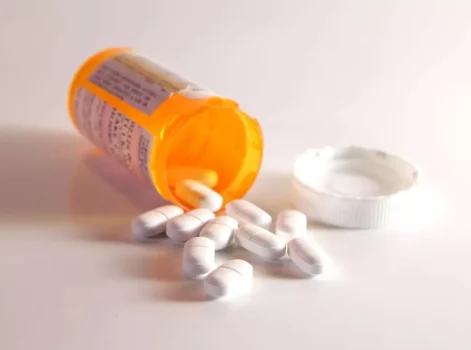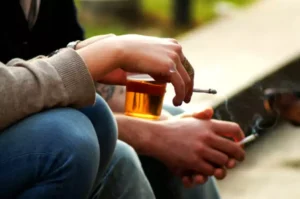
However, those who consume more than two drinks per day have a greater risk of inflammation and red skin as a consequence of vasoconstriction. These people also have an increased risk of experiencing a heart attack or stroke. Research suggests that facial flushing occurs due to an intolerance within the body to alcohol. Facial flushing and transient flushing can occur in low, moderate, and heavy drinkers. Additional research says that for those who drink rarely or moderately, alcohol consumption that results in a red face signifies a sensitivity to alcohol.
- The risk increased exponentially with heavier drinking, defined as more than eight drinks per week.
- Additionally, residential treatment options grant patients fewer distractions that allow them to be fully immersed in the treatment process.
- You can find full details of the symptoms of cancer of the oesophagus on the NHS website.
- Years of chronic alcohol consumption have ravaged their body and mind, and their lives revolve around little else other than the bottle.
National Institute on Alcohol Abuse and Alcoholism (NIAAA)
If you find yourself getting flushed after having one alcoholic beverage, it’s likely an underlying health condition, such as hypersensitivity to alcohol or rosacea, causing the symptoms. People with East Asian ancestry have an increased risk of alcohol intolerance and flushing due to a deficiency in the enzyme ALDH2. Your vessels widen when you drink alcohol, making it easier for your blood to flow from arteries to veins and increasing the heat escaping your internal organs.

Why Excessive Drinking Causes Facial Changes

Rosacea is a chronic skin condition that affects over 415 million individuals worldwide. The nose and cheeks are the most common areas of the face that develop a deep red coloration. When you’re dehydrated, that can show up on your face in the form of dry, flaky skin, more visible signs of aging, or flare-ups of skin conditions like psoriasis and eczema. Your relative may naturally have a big, bloated face and a red, bulbous nose. The physical signs of an alcoholic, even one that has quit drinking and is in recovery, can often be spotted a mile away. They can also linger for years or can be part of the permanent damage done from a person who became obsessed, controlled and dependent on the drink.
Treatment Options for Alcoholism
- Binge drinking is defined as 4 or more drinks for women or 5 or more drinks for men on one occasion.
- At this point, drinking is no longer just a casual social activity — it’s become a daily habit that may be used to cope with stress, anxiety or other emotional problems.
- This way, you’ll likely end up consuming less alcohol, which in turn, may prevent flare-ups.
- To understand why some of us go red when we drink alcohol, we need to delve a little bit into the science of alcohol and how our bodies process it.
- Instead, it depends on various factors, such as the amount you drink, the frequency, and the surrounding temperature or humidity levels.
- Rosacea sufferers can also have periods where symptoms reduce, if drinking is reduced [5].
- There is also a risk that, by masking the effects of alcohol intolerance, antihistamines can allow someone to drink more alcohol, thereby increasing the risks to their health.
Drinking only moderate amounts of alcohol (two drinks a day) may not having a long lasting effect on the face and body [28]. Alcohol also breaks down collagen in vein walls, resulting in “spider veins” being more apparent on the surface of the skin [16]. Not a skin condition per se, but can lead to jaundice, spider angiomas, and other skin manifestations related to liver dysfunction.
Li said she generally tells people not to drink more than two or three times per week. When alcohol is not present, individuals may experience uncomfortable symptoms such as restlessness, tremors, headache, nausea, vomiting and insomnia. Aside from agitating rhinophyma or Rosaceae, alcoholism can have several other effects on the looks of those why do alcoholics have a red face suffering from it. Over time, the damage done can lead to alcoholic neuropathy, where the peripheral nerves in your limbs have been badly damaged by alcohol. Nonprofits like SMART Recovery are free and expert-endorsed routes to sobriety, and organizations like Sunnyside and Alcohol Change UK support people in simply reducing their drinking.
If possible, you should try giving up booze altogether and replacing it with something healthier. But when some of us go red, it’s for one particular reason – alcohol. In some parts of the world – particularly the USA – it’s known as “Asian flush” or “Asian glow”.

P.S. We did the homework so you don’t have to:
- Read on to learn how and why alcohol damages your physical appearance, and what you can do about it.
- Some people also use lasers and light-based therapies to reduce redness.
- Drinking alcohol has been debunked by research as a direct link to this condition.
- They may begin drinking early in the day and plan their day around their drinking.
In some cases, residential treatment programs (rehab) may be needed, especially for those with severe addiction or co-occurring mental health issues. Joining support groups like Alcoholics Anonymous (AA) or SMART Recovery can provide ongoing support and encouragement from others who are also recovering from alcohol addiction. If you or a loved one suffer from alcohol abuse, reach out to us at Avenues Recovery so we can guide you on your path to recovery.
- In contrast, men who did not flush after drinking did not see an increased risk of high blood pressure until they drank eight or more drinks per week.
- It is hard to quantify exactly when these changes become visible due to each person’s liver function.
- In the case of alcoholic face, it’s all about cutting back on drinking alcohol.
- Sometimes, people also develop a puffy face from drinking too much alcohol.
- ‘Alcoholic face’ or ‘puffy face’ is a result of the dehydrating effects of alcohol.
It often drives people with alcoholism to keep drinking in order to limit these symptoms. For men, heavy drinking is defined as four drinks a day or more than 14 drinks a week. For women, it’s defined as three drinks a day or more than seven drinks a week (1). Moderate drinking is defined as 14 or fewer drinks per week for men, and seven or fewer drinks per week for women.

This is toxic and can cause a histamine release, resulting in flushing and other symptoms. As you detox from alcohol, get lots of rest, drink plenty of water, and eat a solid diet. Use gentle skincare products as your face gets used to your new routine. Talk to your doctor or dermatologist about existing skin conditions. A more serious side effect of heavy drinking is a yellowish tint in the whites of your eyes. This is a sign of jaundice and the beginnings of liver disease or cirrhosis.
